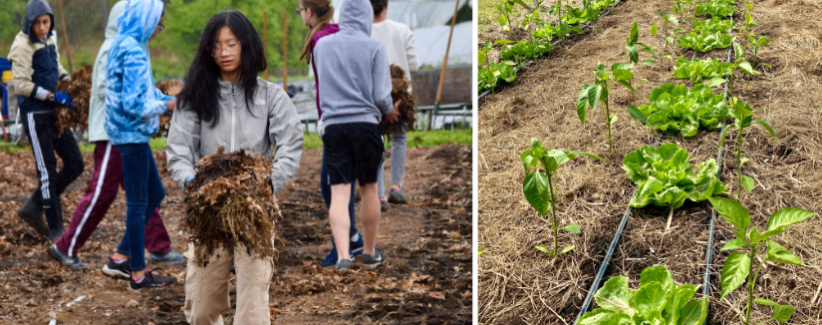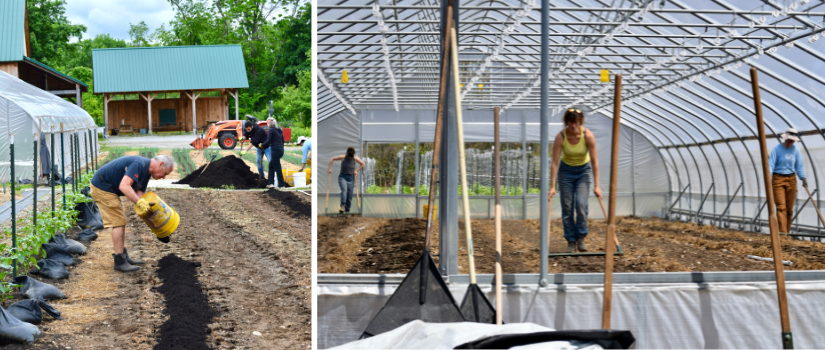Deepening Our Partnership with the Soil

The past two years have been a picture-perfect lesson in why our relationship with the land we cultivate is one of ongoing commitment and learning. A drought in 2020, followed by extraordinary heat and rain in 2021, took their toll on farms across New England—and Gaining Ground was no exception. We watched as our farm and farmers weathered events that might have been catastrophic for our harvests, minimized the toll they took, and came through the other side a bit battered and exhausted but undaunted.
Since we began the process of converting the farm to a no-till, regenerative growing practice—which has its roots in ancestral land management strategies, many of which originated within Indigenous, Black, and Latinx communities—we have seen what can come from striving to build a relationship with the land that is one of mutual benefit rather than consumption, waste, and degradation. We have moved away from more conventional, machine-based farming practices—those which tend to rely on heavy equipment, tilling, and synthetic fertilizers and pesticides—and toward practices that encourage healthy ecosystems, biodiversity, and the creation of soils rich with organic matter.
In the process of doing so, over the past nine years our harvests have tripled and our soil has grown more resilient as the unpredictable effects of climate change continue to intensify.

We saw during the past two growing seasons that the land gave generously to us during a time of great ecological strain, and we’re reminded of how critical it is that we give back in return. This year, we have been working on multiple fronts to further build soil health. Thanks to funding from the Gilson Family Foundation, the Lydia B. Stokes Foundation, and the American Farmland Trust, we have been able to double the amount of compost that we normally put down and further expand our use of cover crops—which will include planting summer cover crops of sorghum Sudangrass, cow peas, sunn hemp, and clover for the first time in order to give some of our beds a chance to rest. These practices will increase the cation exchange capacity, biodiversity, and water-holding capacity of our soils, preventing erosion and improving nutrient content.
Moreover, as Anna wrote in her newsletter piece earlier this spring, we’re expanding our use of organic mulches, such as dead leaves, salt marsh hay, and woodchips, to keep the soil protected and encourage the living systems below its surface. We’re also integrating more intercropping—the practice of growing two or more crops together in close enough proximity that they interact biologically—to maximize photosynthesis and keep the soil covered.

In the fields, you can find beds growing with both lettuces and peppers or scallions. And just this week Farmers Anna and Chrissie were undersowing tomatoes with red clover and annual white sweet clover.
The health of our soils is the health of our communities. There have been countless headlines in the past year that the Corn Belt—where some of the richest soil on the planet has historically been found—has lost a third of its topsoil due to erosion caused by conventional farming practices. This diminishes yields as well as the nutrient content of the foods grown in these denuded soils. In response, conventional farmers often increase their reliance on fertilizers, further contributing to the pollution of rivers and lakes.
By working in partnership with the land to rebuild organic matter and biodiversity in our soils, we can help to reverse the toll of land mismanagement and mitigate the effects of climate change, and we can contribute to the wellbeing of our larger ecosystem—encompassing the land, the farmers and volunteers who work in it every day, and the people experiencing food insecurity who eat the foods we grow.